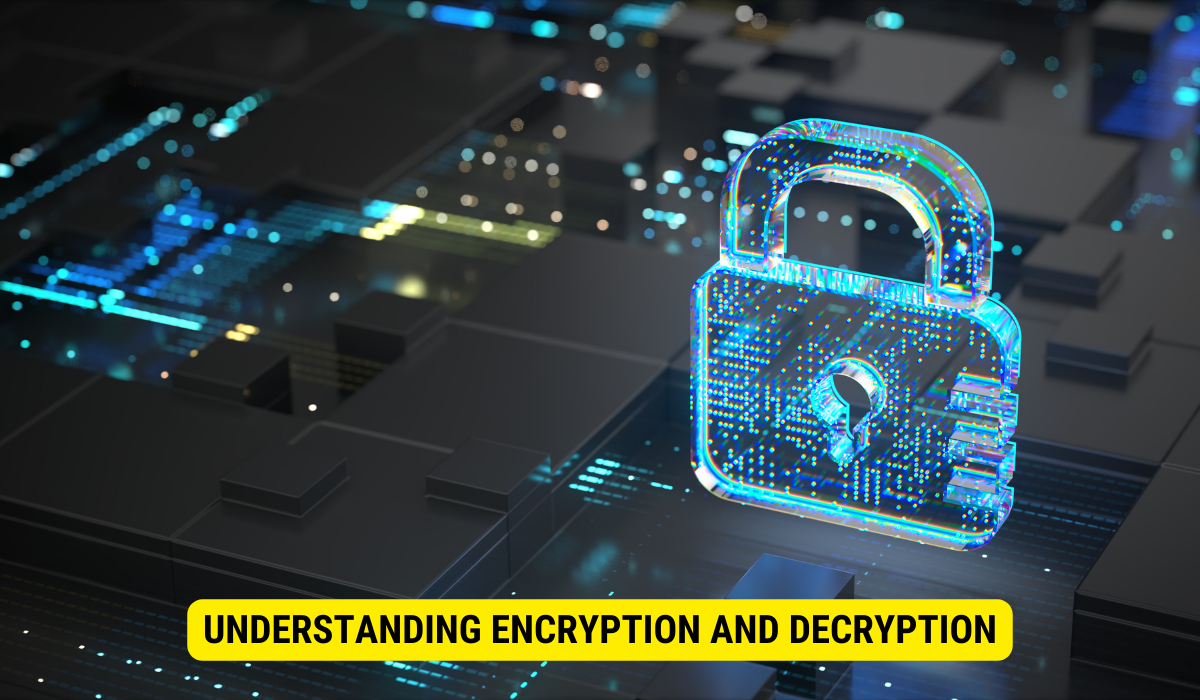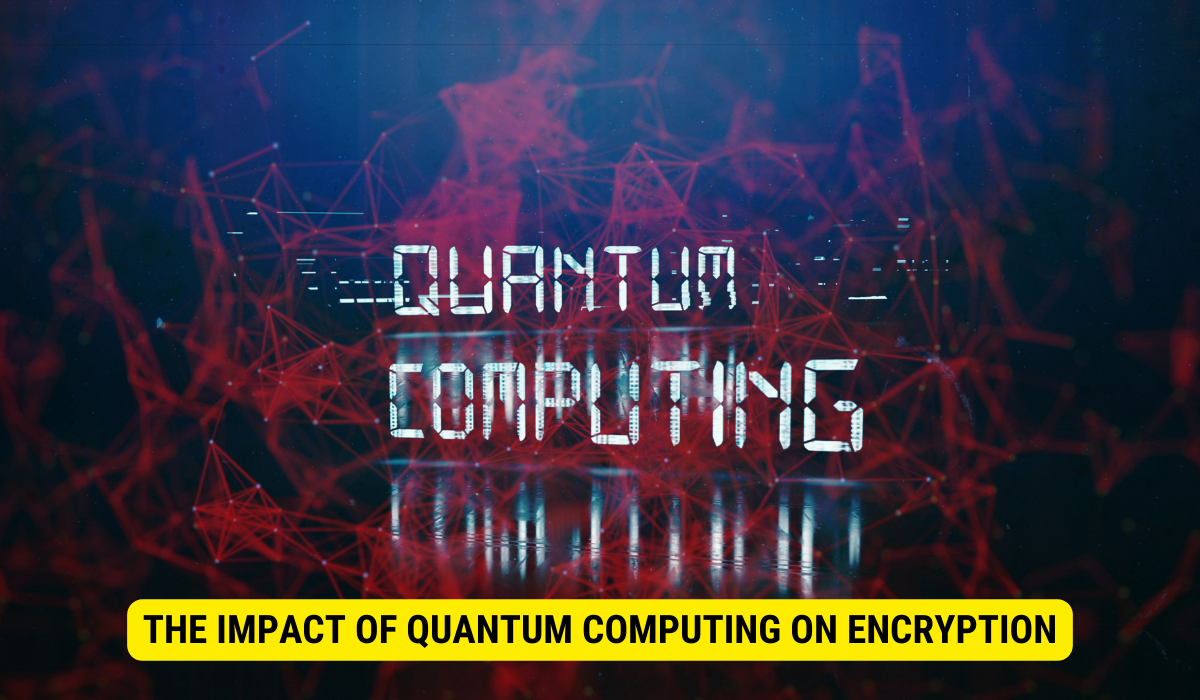The amount of data that can be encrypted or decrypted using a customer master key depends on various factors, such as computational resources, key length, and the chosen encryption algorithm. Secure management of this key enhances overall data protection.
In today’s digital age, data security has become paramount. Organizations and individuals need to protect their sensitive information from prying eyes. Encryption and decryption are key components in achieving data security. But have you ever wondered how much data can be encrypted or decrypted using a customer master key? Together, we will discover the intricacies of encryption and decryption, the role of a customer master key, the limitations of data encryption and decryption, and how to enhance security using a customer master key. Finally, we will discuss the future of data encryption and decryption, including emerging trends and the potential impact of quantum computing.
Understanding Encryption and Decryption

Encryption is the transformation of plain text into cipher text, making it incomprehensible to unauthorized parties. Conversely, decryption involves the reverse operation of converting cipher text back into plain text. These procedures serve as the cornerstone of data security and find extensive use across diverse applications, such as ensuring secure communication and storage.
Regarding data security, encryption plays a crucial role in safeguarding sensitive information. Whether it’s personal data, financial details, or classified documents, encryption ensures that even if unauthorized individuals gain access to the data, they won’t be able to understand or misuse it.
But how does encryption work? Let’s dive deeper into the basics.
The Basics of Encryption
Encryption relies on mathematical algorithms and keys to transform data. The key is a crucial component as it determines the level of security. It can be a symmetric key, where the same key is used for encryption and decryption, or an asymmetric one, where different keys are used for encryption and decryption.
In symmetric key encryption, both the sender and receiver utilize the same key to perform encryption and decryption tasks. This shared key is employed to transform plaintext into ciphertext and reverse the process to obtain the original plaintext. The security of symmetric key encryption is primarily determined by the intricacy of the algorithm and the length of the key employed.
In contrast, asymmetric key encryption employs a pair of keys: a public key and a private key. The public key is employed for encrypting data, while the private key is employed for decryption. This method offers enhanced security due to the confidential nature of the private key, which is never disclosed to others.
Contemporary encryption techniques, such as the Advanced Encryption Standard (AES), are highly secure and widely utilized. These algorithms utilize specific key lengths, typically 128, 192, or 256 bits, for the encryption and decryption of data.
Now that we understand encryption let’s explore the reverse decryption process.
The Process of Decryption
Decryption is the reverse encryption, converting cipher text to its original plain text form. The encryption algorithm and the correct key must be used to decrypt data. Deciphering the cipher text is extremely difficult, if not impossible, without the correct key.
Decryption involves applying the inverse of the encryption algorithm to the cipher text, using the appropriate key. This process reverses the encryption process, transforming the cipher text into plain text.
Once decrypted, authorized individuals or applications can read and process the data. Decryption is essential in accessing encrypted data, ensuring that the intended recipients can understand and utilize the information.
It’s important to note that the security of encryption and decryption relies heavily on the algorithm’s strength and the key’s secrecy. As technology advances, encryption algorithms evolve to withstand new threats and vulnerabilities.
Understanding encryption and decryption is crucial in today’s digital world, where data privacy and security are paramount. Organizations and individuals can protect their sensitive information from unauthorized access by implementing robust encryption algorithms and safeguarding encryption keys.
The Role of Customer Master Key in Encryption

Encryption algorithms and keys provide a solid foundation for data security, but managing these keys at scale can be challenging. This is where a customer master key (CMK) comes into play.
When it comes to securing sensitive data, encryption is a crucial aspect. Encryption ensures that data is transformed into an unreadable format, making it inaccessible to unauthorized individuals. However, encryption alone is not enough. The management of encryption keys is equally important to ensure the security and integrity of the encrypted data.
Defining the Customer Master Key
A customer master key is a unique key generated and managed by the user or organization. It serves as the master key for encrypting and decrypting data. The CMK is often stored securely in a key management system or hardware device to prevent unauthorized access.
Think of the customer master key as the ultimate guardian of your encrypted data. It acts as the gatekeeper, allowing authorized individuals to access the encrypted information while keeping it safe from prying eyes. Without the customer master key, the encrypted data remains locked and indecipherable.
How the Customer Master Key Works?
The customer master key is used to encrypt and decrypt other encryption keys, such as data encryption keys (DEKs). These DEKs are used to encrypt and decrypt the actual data. Data can be securely stored or transmitted by encrypting the DEKs with the CMK.
Imagine the customer master key as the key to a treasure chest. Inside the chest, you have multiple smaller boxes containing a valuable item. The customer master key locks and unlocks these smaller boxes, ensuring that only authorized individuals can access the treasures within.
A customer master key provides a central control point for managing encryption keys. It enables organizations to enforce security policies, rotate keys regularly, and maintain high data security throughout the encryption process.
Furthermore, the customer master key allows for granular access control. Different individuals or groups can be granted different levels of access to the encrypted data, ensuring that only those with the necessary permissions can view or modify the information.
Additionally, the customer master key can be easily rotated or changed, providing an extra layer of security. Regularly rotating the key ensures that the encrypted data remains secure even if one key is compromised. This practice is especially important in industries that handle highly sensitive information, such as healthcare or finance.
Moreover, the customer master key can be integrated with existing security systems, such as multi-factor authentication or access control lists. This integration enhances the overall security posture of an organization, making it even more challenging for unauthorized individuals to access encrypted data.
In conclusion, the customer master key plays a vital role in encryption by providing a secure and centralized method for managing encryption keys. It is the guardian of encrypted data, ensuring only authorized individuals can access and decrypt the information. With the customer master key, organizations can enforce security policies, rotate keys regularly, and maintain high data security throughout the encryption process.
Limitations in Data Encryption/Decryption
While encryption and decryption are powerful data security tools, certain limitations need to be considered.
Factors Affecting Encryption/Decryption Capacity
Encryption capacity depends on various factors, including computational resources, key length, and the encryption algorithm used. Longer keys and more complex algorithms require more computational power, which can impact the speed and efficiency of the encryption and decryption process.
The hardware and software infrastructure available can also affect the encryption and decryption capacity. Insufficient resources may result in slower encryption and decryption speeds or even failure to process large amounts of data.
Overcoming Encryption/Decryption Limitations
To overcome these limitations, organizations can employ several strategies. One approach is to optimize the encryption and decryption processes by leveraging hardware acceleration or specialized encryption hardware. This can significantly enhance the capacity and performance of encryption and decryption operations.
Furthermore, selecting efficient encryption algorithms and key lengths that balance security and performance can mitigate the limitations. Regularly upgrading hardware and software infrastructure to keep up with technological advancements is another crucial step in overcoming encryption and decryption limitations.
Enhancing Security with a Customer Master Key
While encryption and decryption provide a robust foundation for data security, using a customer master key can enhance security even further.
Importance of Secure Key Management
Secure key management is essential to maintain the integrity and confidentiality of encryption keys. With a customer master key, organizations can implement strict access controls, securely store keys, and enforce key rotation or retirement policies. This level of control ensures that encrypted data remains secure, even if other security measures are compromised.
Best Practices for Using a Customer Master Key
When using a customer master key, certain best practices should be followed. These include generating strong and unique key material, implementing a robust key management system, regularly rotating and retiring keys, and securely storing and backing up keys.Organizations can enhance the security advantages offered by a customer master key by following these recommended practices.
Future of Data Encryption and Decryption
Data encryption and decryption are constantly evolving to meet emerging challenges and advancements in technology. Let’s take a glimpse into the future and explore what lies ahead.
Emerging Trends in Encryption Technology
Advancements in encryption technology are driven by the need for stronger security in an increasingly connected world. One emerging trend is the adoption of post-quantum cryptography, which focuses on developing encryption algorithms resistant to quantum computer attacks.
Another trend is the integration of encryption into hardware devices, such as processors or solid-state drives. By incorporating encryption into the hardware level, data can be protected even if the device is compromised.
The Impact of Quantum Computing on Encryption

Quantum computing has the potential to revolutionize encryption and decryption. With its immense computational power, quantum computers can break traditional encryption algorithms in seconds. This has increased interest in developing quantum-resistant encryption algorithms as a countermeasure.
Quantum-resistant encryption algorithms, or post-quantum cryptography, are being researched and developed. These algorithms aim to provide high security against attacks from classical and quantum computers, ensuring that data remains secure in the face of evolving technology.
Key Takeaways
- Understanding Encryption: Encryption converts plain data into an unreadable format, protecting it from unauthorized access, while decryption reverses the process.
- Role of the CMK: The CMK provides a centralized approach to managing encryption keys, enhancing data security, and enforcing policies.
- Factors Influencing Encryption Capacity: The ability to encrypt/decrypt using a CMK depends on computational resources, the encryption algorithm, and key length.
- Secure Key Management: Proper handling of the CMK, including storage, access control, and key rotation, is vital for maintaining data security.
- The Future and Quantum Computing: With the advent of quantum computing, encryption methods must evolve to counteract the potential threats these powerful machines pose.
FAQs
What is a Customer Master Key (CMK)?
A CMK is a unique key generated and managed by users or organizations, serving as the primary key for encrypting and decrypting data.
Why is the CMK important in the encryption process?
The CMK offers centralized control for managing encryption keys, allowing secure encryption and decryption of data, and aiding in enforcing security policies.
What factors affect the capacity for encryption and decryption using a CMK?
Factors include computational resources, encryption algorithm choice, and key length.
How does quantum computing impact encryption?
Quantum computers possess the power to break many traditional encryption algorithms rapidly, pushing for the development of quantum-resistant encryption algorithms.
Why is secure key management essential when using a CMK?
Secure key management ensures the integrity and confidentiality of encrypted data, providing strict access controls, safe storage, and enforcing key rotation or retirement policies.
Conclusion
In conclusion, the amount of data that can be encrypted or decrypted using a customer master key depends on various factors such as computational resources, key length, and the encryption algorithm. While encryption and decryption play a crucial role in data security, using a customer master key enhances security by providing centralized management and control. As technology advances, the data encryption and decryption field continues to evolve, with emerging trends like post-quantum cryptography shaping the future of security. By staying informed and implementing best practices, organizations can ensure their data remains secure in an ever-changing digital landscape.
